The Asuka-Fujiwara area, straddling Asuka village and the cities of Sakurai and Kashihara in Nara Prefecture, is a stretch of pastoral area with ages-old woodlands.
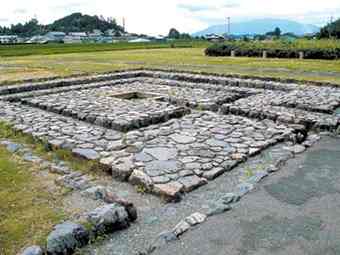 You can spend a perfectly peaceful day taking a leisurely walk there, where several unmanned stalls selling locally grown vegetables and other offerings are set up along the roads.
You can spend a perfectly peaceful day taking a leisurely walk there, where several unmanned stalls selling locally grown vegetables and other offerings are set up along the roads.
The seemingly idyllic setting belies the fact that Asuka-Fujiwara was the site of cutting-edge cities in Japan between the late sixth to the early eighth centuries.
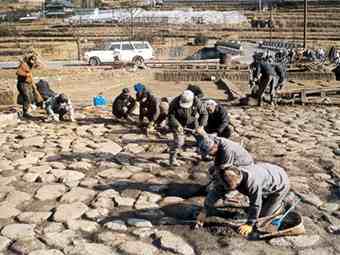 The area reached its zenith during the Asuka Period, when Suiko, the country's first reigning empress, established the Toyuranomiya imperial palace there in 592. The nation's capital was moved to Heijokyo in the present-day city of Nara and its vicinity in 710.
The area reached its zenith during the Asuka Period, when Suiko, the country's first reigning empress, established the Toyuranomiya imperial palace there in 592. The nation's capital was moved to Heijokyo in the present-day city of Nara and its vicinity in 710.
Although the Asuka Period lasted a relatively short time, compared with other periods, it nevertheless played a crucial role in the country's history.
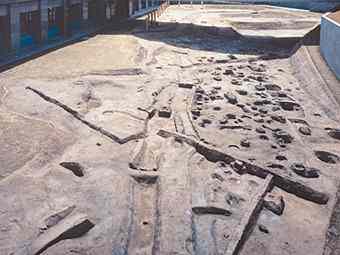 It was during this period that a framework to govern the nation with fixed statutes was completed and the minting of coins, the foundation of a monetized economy, was introduced.
It was during this period that a framework to govern the nation with fixed statutes was completed and the minting of coins, the foundation of a monetized economy, was introduced.
Moreover, the country's first history books, such as Kojiki (Record of Ancient Matters), Nihon Shoki (Chronicles of Japan) and Manyoshu, the earliest extant collection of Japanese poetry, were compiled.
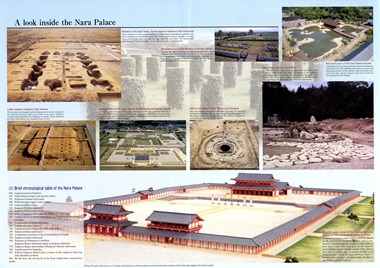 In short, the Asuka Period marked the dawning of Japan as a nation equipped with a governing system.
In short, the Asuka Period marked the dawning of Japan as a nation equipped with a governing system.
New excavations in Asuka-Fujiwara have excited archaeologists not only because they were from the birthplace of Japan's political system and culture but also because almost all of them had been preserved in good condition.
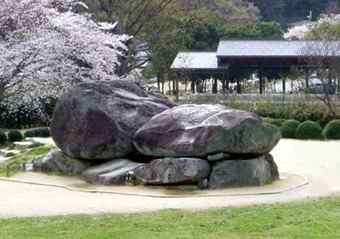 They were kept largely unscathed, as Asuka-Fujiwara never returned to the limelight as the country's political and economic center after the capital was moved to Heijokyo.
They were kept largely unscathed, as Asuka-Fujiwara never returned to the limelight as the country's political and economic center after the capital was moved to Heijokyo.
Of all the sites dating to that period, the most important 28 sites were registered in Japan's World Heritage Tentative List in 2007 as Asuka-Fujiwara: Archaeological sites of Japan's ancient capitals and related properties.
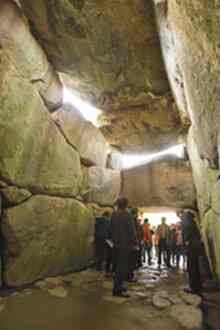 Among the most noted are the Ishibutai (stone stage) tomb and the Takamatsuzuka tomb.
Among the most noted are the Ishibutai (stone stage) tomb and the Takamatsuzuka tomb.
Ishibutai tomb is a chamber made of huge rocks. It remains a mystery how people at that time could move and place such massive blocks. It is built with more than 30 rocks, which weigh 2,300 tons in total. The rock placed to serve as a ceiling alone is about 77 tons.
The discovery of the chamber in 1933 stunned the public, suggesting a possibility of the existence of many more remains just waiting to be uncovered.
It paved the way for archaeologists to launch full-fledged excavations in the area.
Today, visitors are not allowed to enter the Takamatsuzuka tomb, which is renowned for brilliantly colored murals.
But you can experience what it is like inside at nearby Takamatsuzuka Mural Hall, which exhibits elaborate replicas.
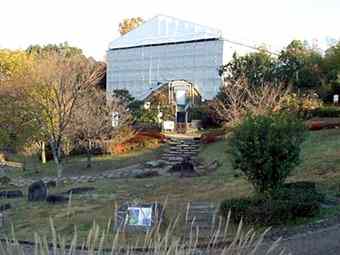 Asuka-Fujiwara's appeal does not end with just ancient tombs.
Asuka-Fujiwara's appeal does not end with just ancient tombs.
It is also home to archaeological sites Den-Asuka-Itabukinomiya and Fujiwarakyu, both of them imperial palaces.
Standing at those locations, you can let yourself be transported back to a time more than 1,300 years ago. You can almost hear the hustle and bustle of a thriving city.
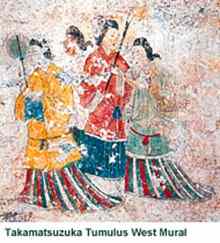 One of the distinctive features of the Asuka Period is a number of uniquely shaped stone artifacts.
One of the distinctive features of the Asuka Period is a number of uniquely shaped stone artifacts.
There is a massive stone sculpted to look like a slumbering turtle that some find quite humorous. Stones resembling a man, a Buddhist monk and others dot the fields and paddies.
Asuka-Fujiwara is a rich historical area that weaves the present with the past, where it is only natural that your thoughts will inevitably drift back to ancient times.
* * *
The entire 28 historic sites, including Takamatsuzuka tomb and Ishibutai tomb in the Asuka-Fujiwara area are reached by shuttle bus or rental bicycles from Asuka, Kashiharajingu-mae and Okadera stations on the Kintetsu Yoshino Line.
To reach Asuka Station from Tokyo Station, take the Shinkansen to Kyoto Station, which takes about 140 minutes, and switch to Kintetsu limited express to get to Kashiharajingu-mae Station, about an hour ride, and change to Kintetsu Yoshino Line and get off at Asuka Station, which takes about five minutes.
From Osaka Station, take a JR rapid train to Tennoji Station, which takes about 15 minutes, and from the adjacent Osaka Abenobashi Station, take Kintetsu Minami-Osaka Line express to Asuka Station, about 40-minute ride. (www.asuka-park.go.jp)
Ishibutai tomb is open 8:30 a.m.-5 p.m.; 250 yen for adults; visit (www.asuka-park.go.jp/ishibutai)
Takamatsuzuka Mural Hall is open 9 a.m.-5 p.m.; 250 yen ($3) for adults; closed Dec. 28-Jan. 3; (www.asukabito.or.jp)
Asuka Historical Museum is open 9 a.m.-4:30 p.m.; 260 yen for adults; closed Mondays (if a Monday falls on a holiday, closed the following Tuesday) and Dec. 26-Jan. 3; (www.nabunken.go.jp)
Author: Yoko Kayukawa | Source: Asahi [October 08, 2010]